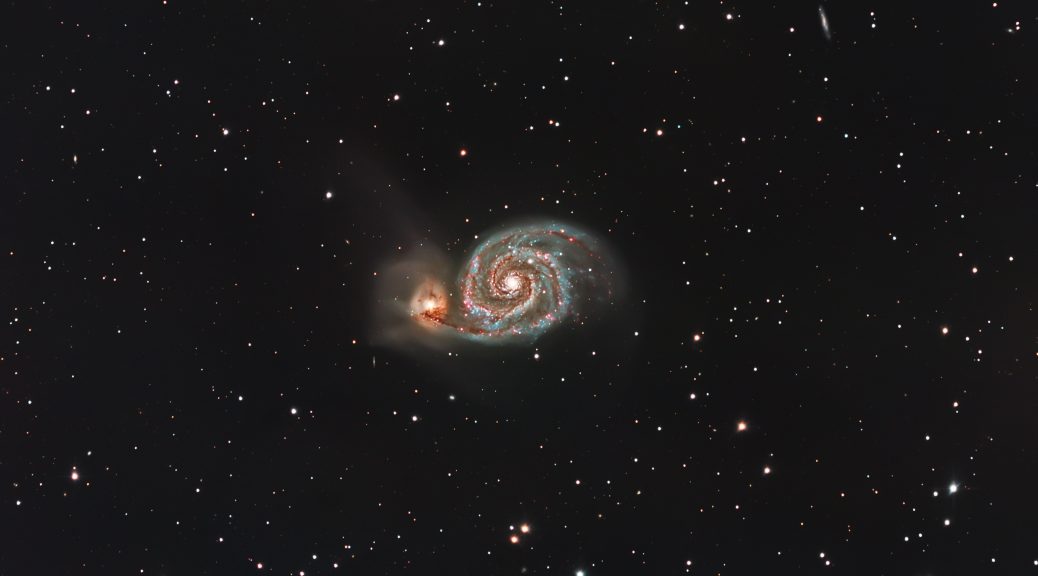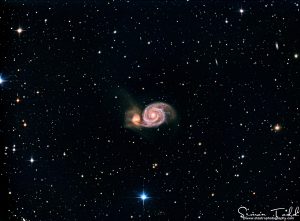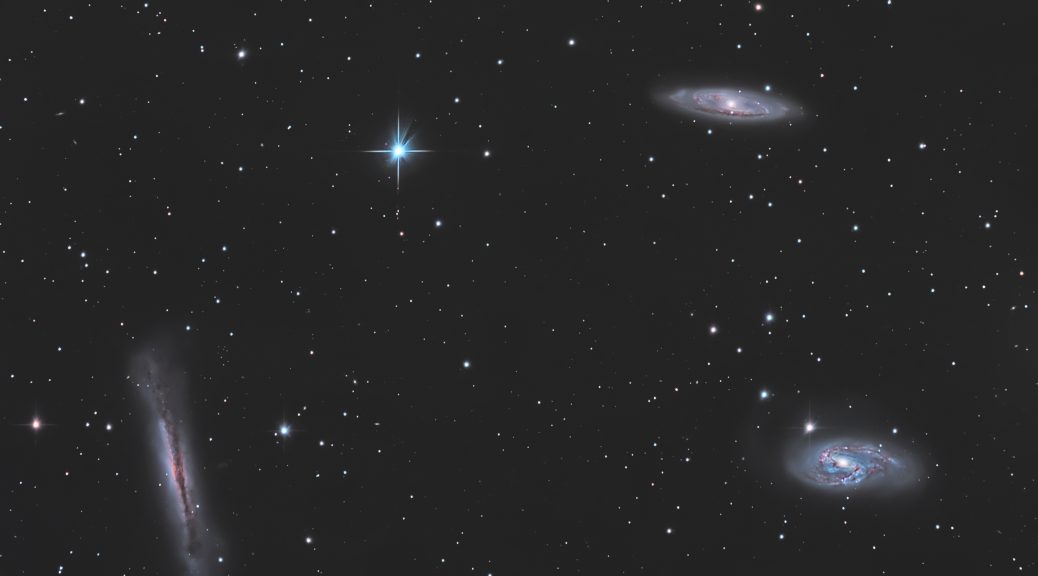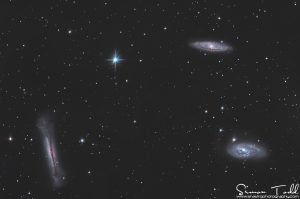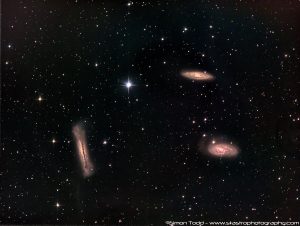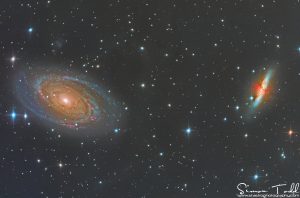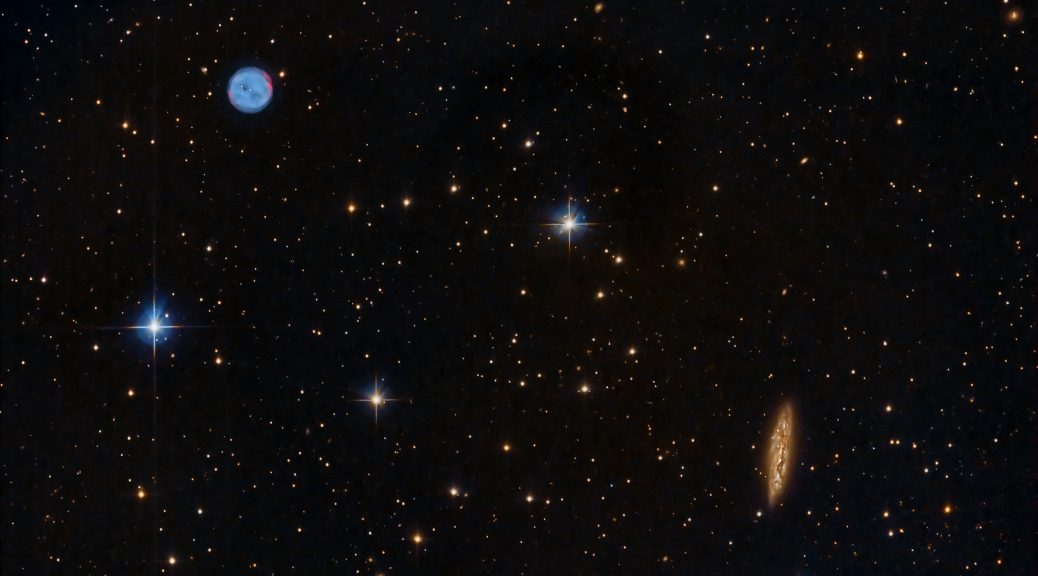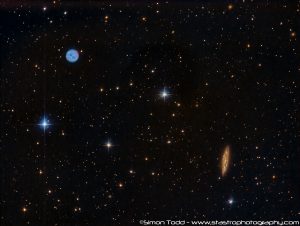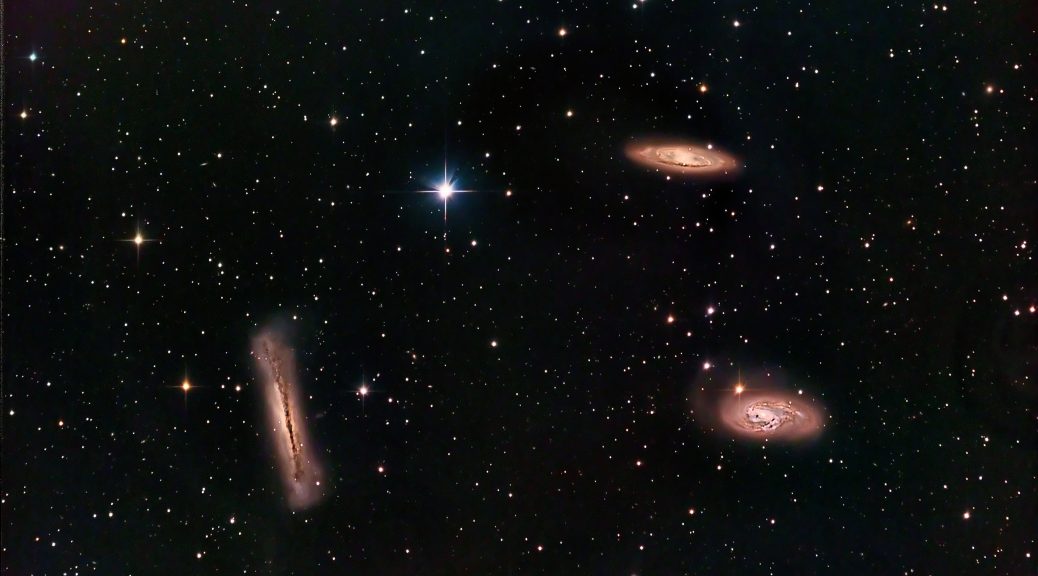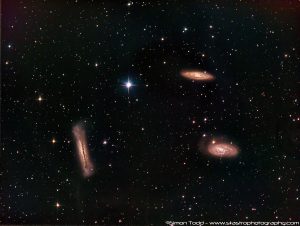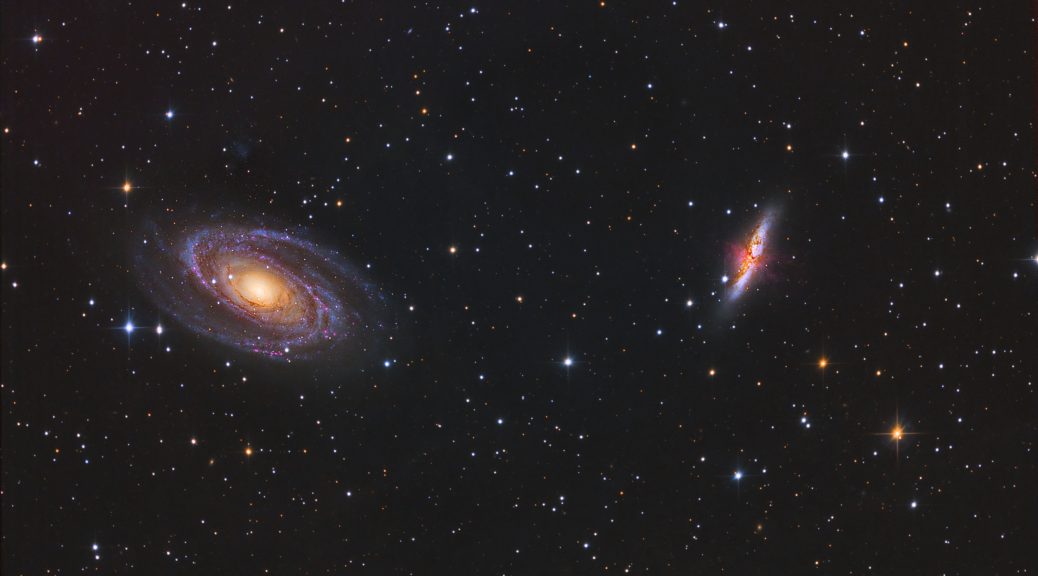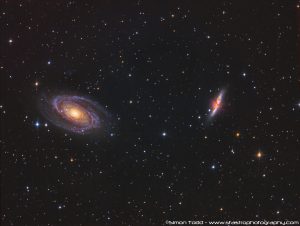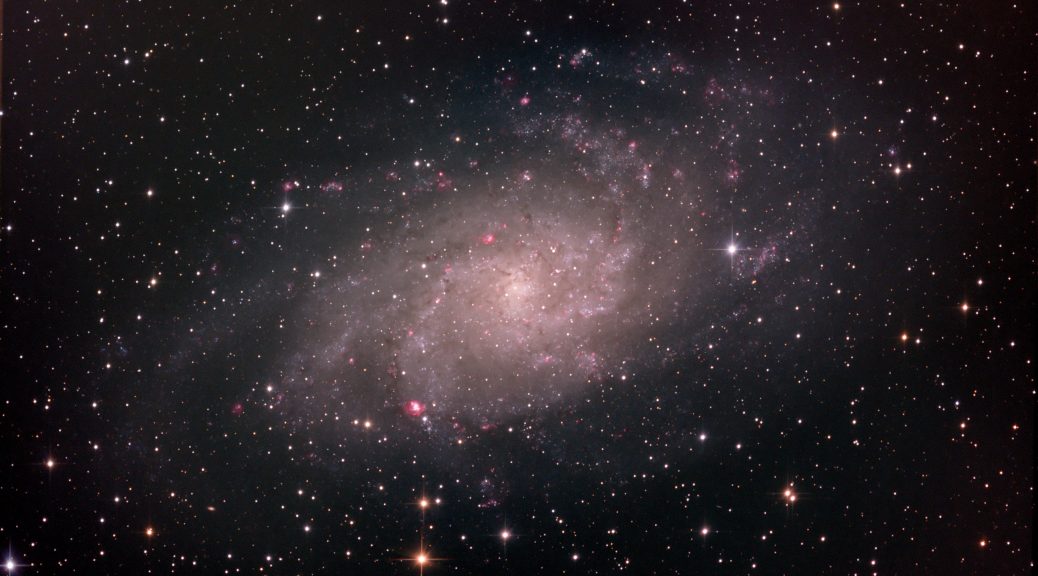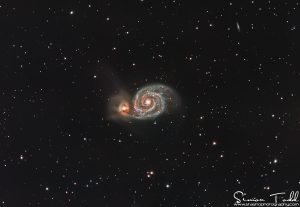 Another Image that I have previously imaged with the Atik Camera, again demonstrating a different resolution obviously showing off a bit more detail, here’s the image previously:
Another Image that I have previously imaged with the Atik Camera, again demonstrating a different resolution obviously showing off a bit more detail, here’s the image previously:
Equipment Used:
Imaging Scope: Sky-Watcher Quattro 8″ F4 Imaging Newtonian
Imaging Camera: Qhyccd 183M 20mpx ColdMOS Camera at -20C
Guide Scope: Sky-Watcher Finder Scope
Guide Camera: Qhyccd QHY5L-II
Mount: Sky-Watcher EQ8-Pro GEM Goto Mount
Filterwheel: Starlight Xpress Ltd 7x36mm EFW
Filters: Baader Planetarium 36mm LRGB Filters
Software:
Image Acquisition: Main Sequence Software SGPro 3
Guiding: PHD2
Image Processing: PixInsight
Target Details:
Name: M51 / NGC5194 / Whirlpool Galaxy
Constellation:Canes Venatici
RA: 13h 29m 53.00s
Dec: 47° 11′ 51.10″
Distance from Earth: >23 Million Light Years
Image Details:
Luminance: 101×150 Second Exposures
Red: 85×150 Second Exposures
Green: 85×150 Second Exposures
Blue: 85×150 Second Exposures
Total Exposure Time: 14.83 Hours
Acquisition Dates: 6 Apr 2018, 19/20/21 Apr 2018, 5/6/7/8/9 May 2018

